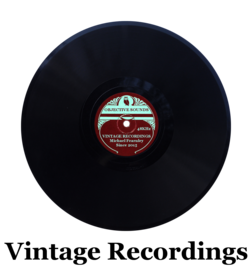
"The String Quartet No. 1 in E flat major, Op. 12, was composed by Felix Mendelssohn in 1829, completed in London on September 14 (though begun in Berlin) and possibly dedicated to Betty Pistor, a neighbor and the daughter of a Berlin astronomer."
| Composer | Felix Mendelssohn |
|---|---|
| Work | Canzonetta from String Quartet No. 1 in E flat major, Op. 12 |
| Performers | The Budapest String Quartet |
| Date Recorded | 26th of January 1927 |
| Date Restored | 10th June 2015 |
| Serial Numbers | HMV D1426 |
| Recording Cutter | Western Electric, type 1B |
| Bandwidth | 55Hz to 5.5kHz |
| Transfer Stylus | 3.5 mil truncated conical |
| Transfer Cartridge | Stanton 500 at 5g |
| Transfer Turntable | Hitachi HT-350 at 78RPM |
| Cutter Compensation | 250Hz first order lift down to 40Hz |
| Click Reduction | DeClick, wavelet mode, 48, 2 passes |
| Crackle Reduction | DeCrackle, wavelet mode, 43, 3 passes |
| Low Frequency NR | DeNoise LF, mono, 150Hz, -46dB |
| Wideband NR | DeNoise, static noise floor, -9dB |
| Limiting Filter | 48dB/octave Butterworth, at bandwidth limits |
| Additional Eq. | Western Electric microphone compensation, 2.9kHz -5dB dip |
This piece appears on the last side of 4 discs containing Schubert's String Quartet No. 14 in D minor, which takes up 9 out of the 10 available sides, leaving one free. This set of discs was cut very 'hot' indeed, so much so that pre-echo can be heard at some points during the 3rd movement. This is quite handy because, while aesthetically in good shape, the set of discs that this recording came on were rather noisy in comparison to most of the others that I have from this era. Fortunately, there isn't too much distortion. Conservative levels of click and crackle reduction were used, as the recording did not respond particularly well, partly due to the already very strong levels. Still, the noise level is very acceptable.
It's easy to hear the rather dry 'boxy' sound, typical of American Victor recordings. This is mainly due to the close micing techniques, as well as the tendency to use smaller recording studios than European companies.
The audio tracks listed on this page are digital restorations of 78 RPM records in my possession, whose mechanical copyright has expired before the time of this pages publication. No later release is used so any copyright affecting such a release does not apply to any of the sound recordings shown on this page. Claims to the contrary may be vexatious if pursued. Any communication between parties claiming copyright of the material on this website and the author of this site will be published immediately with great derision. The contents of this page must not be copied represented or sold without express permission.
Michael Fearnley 2015